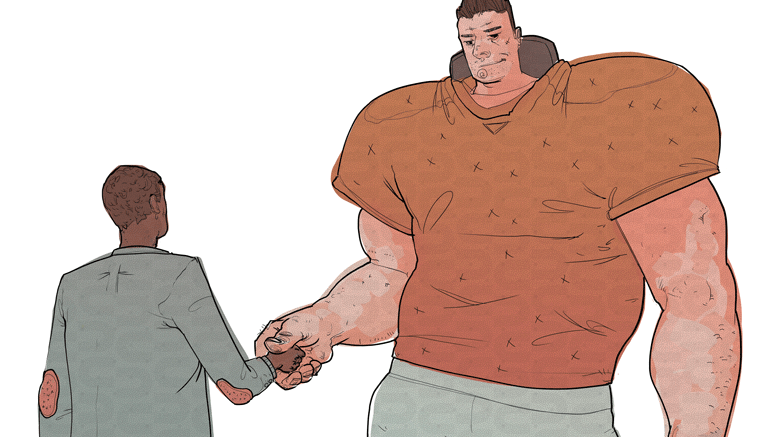On Jan. 1, a new set of CIS recruiting rules came into effect, with a full page dedicated specifically to football. Most of the changes in relation to football involve finances, with teams being prohibited from taking recruits to professional sporting events, for example.
Manitoba Bisons head football coach Brian Dobie is quite familiar with how much recruiting has changed in the CIS over the past two decades, as he and current UBC head coach Blake Nill were the first to begin nationally recruiting at a time when that concept was unheard-of in the Canadian game.
“Recruiting was not recruiting as we know it now. There were certain base rules, but there wasn’t a need the way there is now, because when I came in in the mid-90’s, it was essentially local recruiting,” Dobie said.
As time passed, more and more schools realized that the major variable when it came to winning games was quality recruiting outside of their home province. Certain teams also began receiving strong financial backing from rich local donors, such as Jacques Tanguay at Laval, Stu Lang at Guelph, and most recently, David Sidoo at UBC.
Not coincidentally, all three of those programs found success shortly after linking with the above names. Laval has been a perennial powerhouse for the past decade and a half, Guelph has reached the conference championship three times over the past four years, and UBC claimed their first Vanier Cup since 1997 this past season.
“The more the playing field became imbalanced, the more people started becoming conscious of it and concerned,” said Dobie.
New recruiting document breakdown
According to Dobie, the football coaches in the Ontario University Athletics (OUA) conference were the first to bring up the need to alter certain rules in the document.
“The recent evolution of this [recruiting document] came out of the OUA, out of football,” Dobie said.
“The football coaches and athletic directors in the OUA were very concerned about the disparity in budgets and in additional funding in the budgets from outside sources and the abilities of two, or three, or four of these schools to do great things and the other five or six or seven schools to not do those things.”
The changes to the document were discussed at the latest national meetings as well as the first-ever CIS football summit this past June. The 10-member board of directors for CIS ultimately voted in favour of the new recruiting guidelines in mid-December.
“When you look at the new recruiting document, there’s not a lot of change in the recruiting document from where it was,” says Dobie. “I think it’s just a better document in terms of expanding the technical and spirit of the rules. I think it spells things out more blatantly in black and white as to what can and can’t be done.”
According to Dobie, a number of the new changes to the recruiting document centre around money and financial assistance. Both topics comprised a significant amount of discussion during the national meetings.
“I think right now, that’s probably the biggest concern in CIS football, is the money disparity,” Dobie said.
Manitoba’s 2007 Vanier Cup win
This isn’t the first time a major change has been made to CIS policies with a direct tie to football. In 2008 – following Manitoba’s first Vanier Cup win since 1970 – a new eligibility rule was added which stated that after an athlete graduated high school, they had seven years to complete five seasons of CIS play.
Prior to that, beginning around the mid-90’s, Canada West teams had predominantly been recruiting junior football players, while the teams out East were not. Those players were able to play five seasons of junior football and then five additional seasons in the CIS, making the average age around 27-to-28.
“It had been discussed, it had been bantered around the table for several years. It wasn’t suddenly Manitoba won, let’s do it […] You could see it coming,” Dobie said.
“There had been a lot of discussions at our national meetings and we had fought back the wave over a period of time,” Dobie said.
Eventually, the change was made as the teams in the East had more members and therefore a majority ruled.
The most recent changes to the recruiting document have a very similar aspect to what happened following the 2007 season, except this time it was UBC’s success and financial backing that finally pushed things over the edge.
“Once boom, it happens, I think that’s the exclamation mark and we’ve got to do something about it,” Dobie said.
Compliance
While the impressions among CIS coaches and staff to the new recruiting document is positive, there are still some underlying issues – compliance being the most significant – as schools are expected to police themselves.
“That [compliance] unto itself bothered me more than anything else in this document,” Dobie said.
“Why should Coleen Dufresne [athletic director at the U of M] be responsible for writing perceived wrongs in someone else’s program, with our competitors? That’s not her job.”
The major issue stated by Dobie in relation to recruiting compliance is that there’s no realistic way for one school to investigate another in a timely manner.
“They [the athletic directors] can’t follow up, they have no right to follow up. If I was to accuse someone of something, they can call their colleague at another school and ask the question, but they can’t follow up. There’s no way, they don’t have the means to do that.”
For Dobie, the best-case scenario is to have third party policing, with particular people responsible for every individual conference. Unfortunately, that’s not realistic at the moment as it would likely require too much money to transport the hired officials back and forth across the various conferences.
“I would love to have a couple people in an office in Toronto, and a compliance office in Canada West, OUA, RSEQ, and AUS,” Dobie said.
“The problem, then, is everything is about money […] It wouldn’t be easy, it wouldn’t be cheap, and that therein lies the problem, because if money was no issue, hire 25 people across the country. Put one in every school.”
A positive step towards implementation of the new rules occurred a few months ago, when Graham Brown was hired as the new CEO of the CIS. He’s been asked to form a committee (geared to be up and running in the new year) that will look into how to most effectively police the rules.
“Usually when there’s a need, people find ways to solve the problem, and I’m optimistic and trusting that the CIS will do that,” Dobie said.




